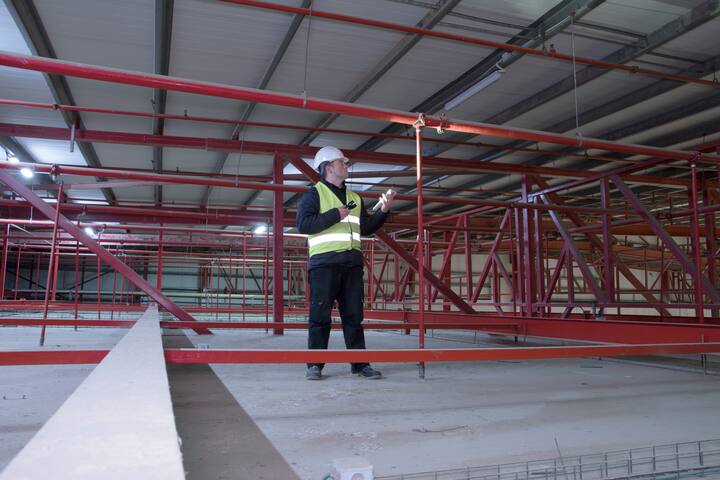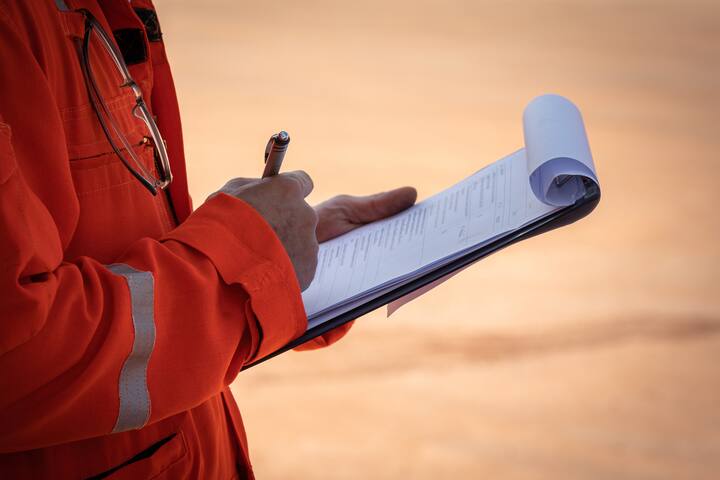
's-Hertogenbosch Netherlands
How we work

The procedure explained from A to Z
Thanks to our use of technology, expertise, and clear communication, the inspection process runs smoothly and efficiently. After the inspection, you’ll receive immediate feedback on the findings—even before the official report is prepared. This way, you’ll know exactly where you stand. Within 20 working days after the inspection, you’ll receive the full inspection report, clearly and concisely summarizing all results.
Our approach
From design assessment to certification our experts handle the entire inspection process to ensure certified fire protection. By conducting the initial inspection, interim inspections, and follow-ups, we help projects move forward efficiently. Watch the video to see how we do this for Theater aan de Parade in Den Bosch.

How we work
An inspection certificate in 8 steps
- 1
Assessment of basic design
The client sends us the basic and detailed design. We start with an initial assessment of the basic design, which consists of the Programme of Requirements (PoR) or the Output Document (UPD) of the installation. This is an administrative inspection in which we determine whether the content of the basic design is complete and meets the derived objective(s). Find out exactly which documents are required here.
- 2
Assessment of detailed design
Next, we check whether the detailed design of the fire protection system meets the basic design principles. The detailed design consists of the drawings, calculations, diagrams and further detailed elaborations of the system. The inspector assesses whether these details ultimately lead to a fire protection system that meets the (required) objectives. Find out exactly which documents are required here.
- 3
Draw up inspection plan
Prior to the on-site inspection, the inspector draws up the inspection plan. This describes the scope and content of the inspection. The inspection points and criteria for approving or rejecting the fire protection system are also included in this plan. The inspector then sends an appointment confirmation for the inspection to be carried out to the client.
- 4
On-site inspection
On the agreed inspection day, the inspector comes on site. The inspection consists of administrative, visual and functional observations and always starts with a short preliminary discussion in which these components are explained. Is the measuring and testing equipment present? Then the inspector can get straight to work. Find out exactly which documents are required for the administrative observations here.
- 5
Debriefing inspection
Has the inspection been completed? Then a follow-up meeting with the client follows immediately. The inspector shares his initial findings. Naturally, everything is also recorded in an inspection report with a conclusion and corresponding substantiation.
- 6
Drawing up the inspection report
After the inspection, the inspector draws up the inspection report with his findings, a conclusion and corresponding substantiation. If it appears that the fire protection system does not yet fully meet the objectives, the report further explains where the system needs to be improved. A fellow inspector reviews the inspection report because of the 4-eye principle.
- 7
Everything in order?
If the inspection shows that all components are in order and the fire protection system meets the requirements and objectives, the inspection certificate can be issued. We send the inspection report and inspection certificate to the client.
- 8
Inspection certificate
Through our use of technology, expertise and clear communication, the inspection process runs smoothly and efficiently. After the inspection, you receive immediate feedback on the findings, even before the official report is drawn up. This way, you know where you stand. Within 20 working days after the inspection, you will receive the inspection report in which everything is once again clearly worded.
An inspection certificate is required to demonstrate that your building is fire-safe. During the inspection, the installations, structural facilities and organisational measures are assessed. If these points are all in order, we will issue you with an inspection certificate. This will prove to the insurer, among others, that your fire protection meets the requirements.
Inspection methodology
There are various methods available for inspecting fire protection systems. We can assess conformity with specific standards or with design basis documents. We can also inspect based on performance objectives according to the CCV inspection scheme. Ultimately, it is the client who decides which inspection method should be used. This choice depends on the purpose of the inspection.
Does the project need to comply with the Besluit bouwwerken leefomgeving (Bbl)? In that case, an inspection based on performance objectives according to the CCV inspection scheme will be required.
CCV inspection scheme
The Centre for Crime Prevention and Safety (CCV) is an independent scheme administrator that develops and manages certification and inspection schemes for fire safety. The CCV inspection schemes define the requirements fire protection inspections must meet in a building. Assessments can be made based on the preliminary design (e.g., the Program of Requirements), the detailed design, after system completion (initial inspection), or during operational use (follow-up inspection). The inspection evaluates whether the fire protection system can achieve the intended goals as defined in the design assumptions.
Accreditation
Inspection activities based on the CCV schemes are carried out under accreditation for systems including fire detection, evacuation alarms, sprinklers, gas suppression, foam suppression, water spray, water mist, and smoke control systems. The inspection includes checking the installation and testing its control functions, as well as evaluating structural and organizational aspects, such as system management and storage. Specific inspection points can be found in the CCV inspection scheme. Based on the inspection, we prepare an inspection report. If the inspection confirms that the system meets the intended objectives, an inspection certificate can be issued.
If the installation falls under PGS15 regulations, the competent authority may impose different requirements. In such cases, the method must be aligned with the authority’s demands. If we need to perform a sample inspection for an installer based on a certification scheme, conformity with specific standards must be determined.
In short, it is important to clearly define the purpose of the inspection beforehand to avoid problems meeting the required conditions later on.
Installation or maintenance certificate
If the system has an installation or maintenance certificate in accordance with the CCV certification scheme, the inspection of that part of the system will be less extensive. Therefore, it must be clearly stated during the application whether or not such a certificate is present.
In the CCV video, the inspection steps are clearly explained once again.
Curious about what we can do for you?